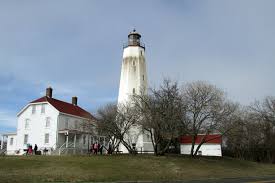Any stories of World War II bring memories back to the few generations still around who remember the horrors of that terrible war and the heroes who came home, some in caskets, some on crutches, some blinded, all deeply scarred by what they had seen and what they had done, or was done to him.
I was nine when the war ended, so my memories of it are the changes we had to make in our lives, and the stories my parents told us. I remember all of us, my parents and three siblings and me, kneel in the living room to say a rosary every night, remembering every soldier, sailor, marine and nurse who was out there risking their lives for us.
It’s some of those memories and the example of my father that are the background for my own lifetime of journalism. My dad wasn’t only a reporter for the Newark Evening News, he was also the chairman of the state’s largest draft board, Board #2 in Union, where we lived. Because he was the man responsible for drafting someone’s son or brother…..never someone’s father…I learned early on in life you have to always do the right thing, and it isn’t important whether people like you or not, say nasty things about you or threaten you. So long as you can follow the right path and know you’re doing the right thing, you simply must do it, my dad always said. And we all have, all of our lives.
There were coincidences, too, for my dad, making different kinds of stories he could file with his straight news accounts. One of my favorites is one that has impacted me for the rest of my life.
That story is an early chapter of the book I wrote about my dad, “The Reporter and the Draft,” and it involves a kid from Union named William L. Kukis.
In July 1945, as a reporter, my dad was assigned to meet the Hospital Ship George Washington when she docked in Staten Island. He felt the thrill, the fears, the anxiety and the excitement of the crowds on the dock, many gasping at the sight of the rows and rows of stretchers and wheelchairs, the lines of men fitted out with crutches, and even the more able sailors and soldiers who were pushing some of those wheelchairs for their less fortunate comrades. He watched as these kids and young men of four years earlier came off the ship with scars from waging war as far back as Pearl Harbor, pride in their hearts, and smiles on their faces as they searched the crowd for loved ones.
My dad was taking notes, talking to waiting family members, anxious to be able to talk to some heroes coming home. But before he got a chance to approach any soldier or sailor coming down the plank, he heard a surprised but thrilled shout, “Hey, there’s the guy who inducted me!” Amid that crowd, and four years later, William L. Kukis still remembered Vincent de Paul Slavin, not the reporter, but Vincent dePaul Slavin, the draft board chairman. And my Dad was the first person to welcome Veteran Kukis back to his home territory, the first one to shake the hand of this returning hero, crutches and all.
There were 3,568 soldiers and sailors about the George Washington that day. Kukis had been seven months overseas with General Patton’s Third Army. He was in Luxembourg on the east side of the SAAR River, leaving that battle unscathed. But then he went to Meckel in Germany, and that’s where a gunshot took off his leg.
But this young hero didn’t lose his sense of humor, his joie de vivre, his spirit. He grabbed my dad’s hand, stood on his crutches, pointing down at where his leg should have been, and joked, “ you drafted me, but I guess I can’t blame this on you.” Then he laughed, told my dad he’d be in to see him at the draft board office on Morris Avenue soon, and with a twinkle in his eye, and respect for a man he could have hated, said, “and then the drinks will be on me.”
I don’t know whether Hero Kukis ever came in for those papers and that drink. My dad didn’t write about that. But I know his affection for my father, and my father’s ability to deal with both the pain and agony of being a volunteer draft board chairman and also the reporter who had to face the injuries and disabilities with which the men he drafted came home. It’s all of that that convinced me, even as a nine year old, that it isn’t important what people say about you, it’s just important that you keep the high standards you were also taught. Then, and only then, the heroes and those with high standards, will respect you.
Taken from one of the stories in my book published “The Reporter and the Draft” in 2007.










